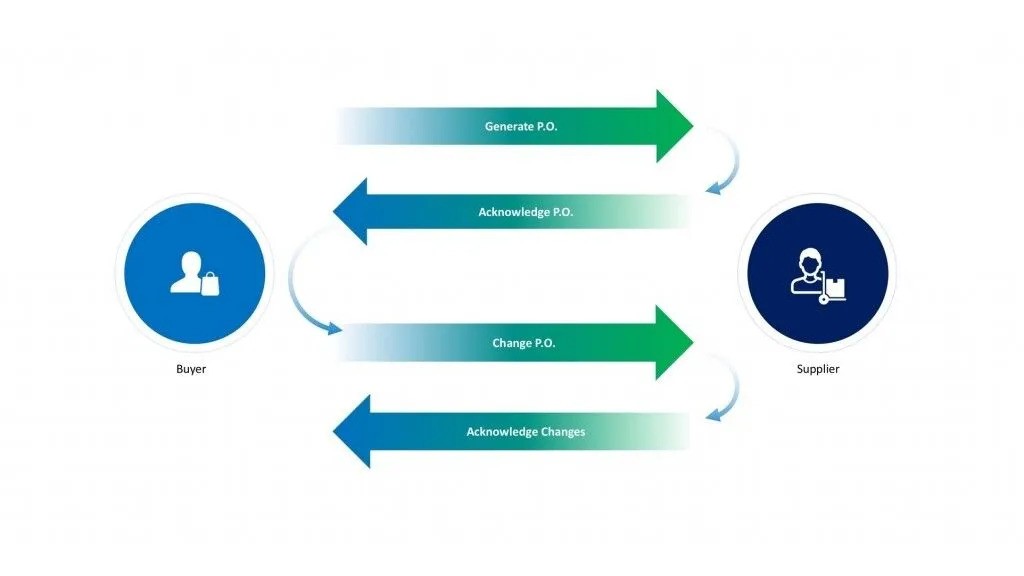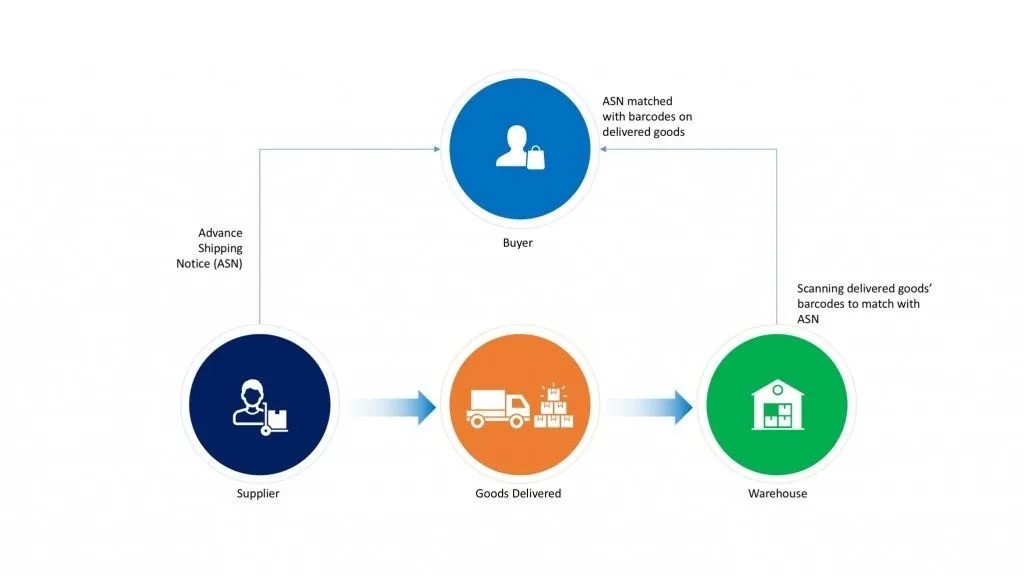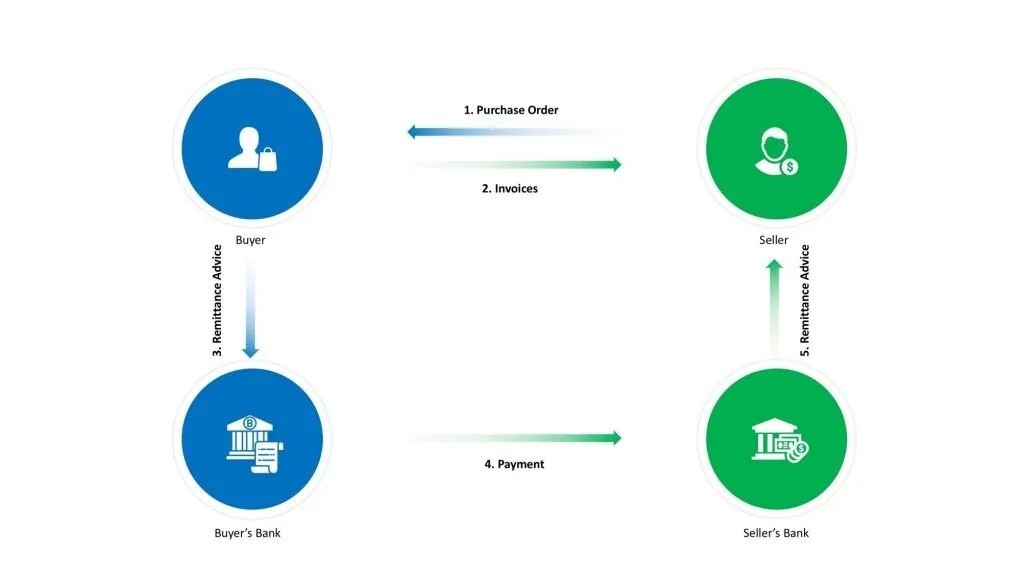The cooperative advantage of EDI integration
Following transportation and transformation, integration is the final step in the EDI process. While transportation provides a pathway for business data and transformation converts the data into a format that the recipient’s system can consume or otherwise accommodate, integration brings the transformed data into the internal or host system. The end-to-end process is always a cooperative affair. This cooperation between endpoint applications enables data transfer between them, improving relationships through seamless coordination across systems, departments, trading partners, transportation networks, and even beyond boundaries.
A good line of communication within your own business functions and with other businesses is essential for success. It brings parties together by promoting a sense of partnership and shared responsibility. When done properly, EDI integration brings about cooperative opportunities that benefit all of the parties involved.
It’s important for trading partners to understand that EDI isn’t new; in fact, it’s one of the older methods of communication between trading partners. Because of its age, it benefits from wide use and acceptance. Newer versions of EDI are far more intertwined with today’s technologies, fully embracing technology standards well beyond X12. This includes XML, JSON, SOAP, and APIs, not to mention making use of technologies such as AS2, SFTP, and innumerable partner-managed connections.
EDI implementation won’t take you head and shoulders above your competitors; rather, it serves as a sign of business maturity, advancing growth within the businesses that have chosen to implement or redeploy EDI software, solutions, and services in recent years. Where EDI was once only found in industries like apparel, grocery, and retail, interest in EDI has seen a resurgence in industries like third-party logistics, food service, wholesale trade, healthcare, and the construction of gas and water utilities.
Using EDI for transportation and supply chains across business footings leads to inventory optimization and direct-to-consumer success, driving businesses ever forward. The transportation industry, which has a historical EDI footprint, is expanding its use of EDI into the area of transportation planning. EDI integration with eCommerce gateways and shipment management tools improves supply chain efficiency, reduces time to market, and improves both visibility and customer service. The email confirmation for your recent online order didn’t show up in your email box by accident. It crossed paths across modern EDI technologies between the time that you completed your order and your phone notified you that “you’ve got mail”.
Recently, there has been a rise in traceability concerns with products – from romaine lettuce to over-the counter medications – resulting in brand impacts on well-renowned companies like Tylenol and Chipotle. A more modern approach and use of EDI technologies can have a significant impact on these areas of commerce. Responding to the ever-present threat to business success, food service and healthcare organizations are expanding their EDI use with a new emphasis on supply chain traceability. FMCG and pharmaceutical companies are now using EDI to trace food from farm to table and the chain of custody in the drug supply chain.
Many business owners assume that EDI integration requires a massively disruptive and costly overhaul of their business processes; as a result, they miss out on the cooperative benefits that EDI offers. The truth is that EDI isn’t disruptive at all and certainly not in the way a trading partner might expect. Rather, EDI complements the business process. Adopting a modern approach to EDI leads to changes that not only reduce manual effort and free up more time to automate other parts of your business. It also helps reduce time to market and improves supply chain efficiency, visibility, and customer satisfaction.
GS1 (formerly the Uniform Code Council) funded a study in 1998 that led to the creation of the General Business Model. The model, enlightening for its time and a predecessor of things to come, identified key buyer-seller relationships and (perhaps unintentionally) key EDI transactions involved in a typical buy-sell relationship. The General Business Model identified four main buyer-seller interactions:
- Information sharing (EDI 832 Transaction Set – Price/Sales Catalog)
- Ordering (EDI 850 Purchase Order)
- Delivery (EDI 856 Advance Ship Notice (ASN))
- Payment (EDI 810 Invoice Transaction)
While a strategic advantage may remain the most common reason for implementing or redeploying EDI, a more compelling case has been made by way of this discussion. So let’s look at the cooperative advantage that EDI integration provides to suppliers and buyers.
Impact on suppliers
Studies (such as of Gromley’s) show minimal to no staff reduction after EDI implementation. While this may appear counterintuitive, the results of implementation provide valuable insights into the inner workings of business.
One study conducted in 8 major companies found that none of the customer service coordinators or clerical workers received higher salaries or promotions because of their EDI experience. Interestingly, even though EDI automated many manual tasks, an equal number of tasks were added to customer service roles.
One might therefore infer that in addition to reducing manual tasks, EDI integration also helped organizations reschedule backlog work items. In other words, EDI integration helped companies make work efforts more manageable, extending beyond the backlog and in to areas such as customer service improvements and cost savings across departments. Thereby, the initial benefit was spread throughout the organization.
Impact on buyers
Simply put, EDI integration saves buyers time and money. EDI provides buyers timelier product ordering, shipment, and delivery information. This increased knowledge results in a better understanding of their suppliers’ and supply chain operations, encouraging an increased level of cooperation and trust between the buyer and its suppliers. This understanding, cooperation, and trust helps both parties to reduce inventories, improve materials management, and increase productivity gains, further improving efficiency and driving cost savings across the buying organization.
Garnering the Cooperative Advantage with EDI
Information sharing
Today, opportunities in EDI extend well beyond order, deliver, and pay. Looking for more opportunities for cooperation begins with looking for opportunity within. Whereas most initial EDI integration improves processes, encouraging teams to become more involved in the EDI process can yield even better results, particularly when redeploying an EDI strategy. Encouraging individuals across the organization now equipped with new EDI knowledge and elevating their responsibilities will increase EDI integration opportunities across the organization.
Business process improvements
EDI integration helps streamline your business operations by increasing order and invoice accuracy, reducing late or incorrect shipments, and avoiding excess inventory. EDI also offers distinct advantages when companies begin to dig deeper into their processing, forecasting, and production schedules, and presents further opportunities to grow their business with the EDI practice without expanding the workforce, becoming a strategic ally in that mission.
Increased responsiveness
Relationship responsiveness goes a long way with your customer base and should be viewed as a bread-and-butter part of the business and a necessary investment in a better business future. EDI integration, when properly managed, results in an increased business awareness among customers and stakeholders, often accompanied by increased requests from within the organization to boost those interactions. Responsiveness to these business requests, the result of a newfound understanding, relies on modern integration techniques, which puts your next EDI integration steps ahead of competitive opportunities.
When you complete your initial EDI integration or redeployment, take a moment to recognize and speak with your teams and talk about their successes and accomplishments. Only then will you begin to hear their desire to look and move forward. The right EDI partner will help you with this and ensure that you have plans for your organization’s future and its future with EDI. For expert advice on your EDI integration needs, get in touch with the PartnerLinQ team today.
 PartnerlinQ
PartnerlinQ









